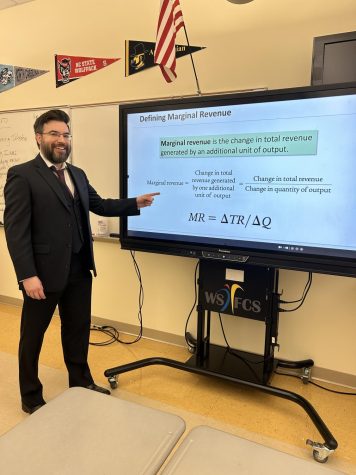Trump’s Wall: Already Causing Problems
February 28, 2019
 On August 23, 2018, the US Senate approved an $850 billion spending bill that funded the Department of Defense, Labor, Education, and Health and Human Services. On September 18, $1.6 billion was set aside for Trump’s border wall until December 7 as part of a short-term spending bill devoted to national defense. Congress then extended funding until December 21.
On August 23, 2018, the US Senate approved an $850 billion spending bill that funded the Department of Defense, Labor, Education, and Health and Human Services. On September 18, $1.6 billion was set aside for Trump’s border wall until December 7 as part of a short-term spending bill devoted to national defense. Congress then extended funding until December 21.
When Congressional Democrats met with Trump in mid-December, the president threatened to shut down the government if $5 billion was not allocated for the wall. The Democrats stated that a wall would be ineffective, so they instead allocated $1.3 for border fencing, levee walls, and technology for current border-security funding. A week later, Trump agreed to compromise and the Senate approved an extension of current spending until February 8.
To no one’s surprise, Trump changed course once again by refusing to sign the bill. By late December, the House passed an appropriations bill including funding to maintain the existing barriers. Senate leaders attempted to renegotiate in hopes of passing a new spending bill. This attempt failed, and the federal government shutdown.
As a result, the longest government shutdown in U.S. history was casted from December 22 to January 25. Several government departments were shut down, and as a result, their workers were left unpaid.
“Over the past decade Republicans have had to become more conservative and Democrats more liberal to maintain their seats in Congress,” history teacher John Clevenger said. This lead to nation-wide controversy and heavy debate across all states, as it proves to be unjust to leave citizens unpaid.
“These representatives have to cater to their constituents in many gerrymandered districts which demand Congress become more extreme if they want to keep their jobs,” Clevenger said, “The result is stalemate, arguing, and frustration.”
To make matters worse, Trump directed TSA workers to return to work without pay. This left many families who normally live paycheck to paycheck in severe financial and emotional distress to keep their lives running the way they usually do. Although national services considered “essential” are still running during a government shutdown, over four-hundred thousand government employees were impacted by this change.
Students at Reynolds are calling the shutdown “the biggest temper tantrum in US history”.
“It’s completely ineffective and detrimental to the government workers and citizens alike,” sophomore Melody Moossavi said.
The shutdown finally came to a close on January 25, returning vital elements of our nation’s central government to their normal state.
“I do think the wall is a waste of money and sends the wrong message coming from a nation made up of entirely immigrants,” Clevenger said.
Many hope a compromise will be met in the near future regarding border security that protects citizens in the right way.












